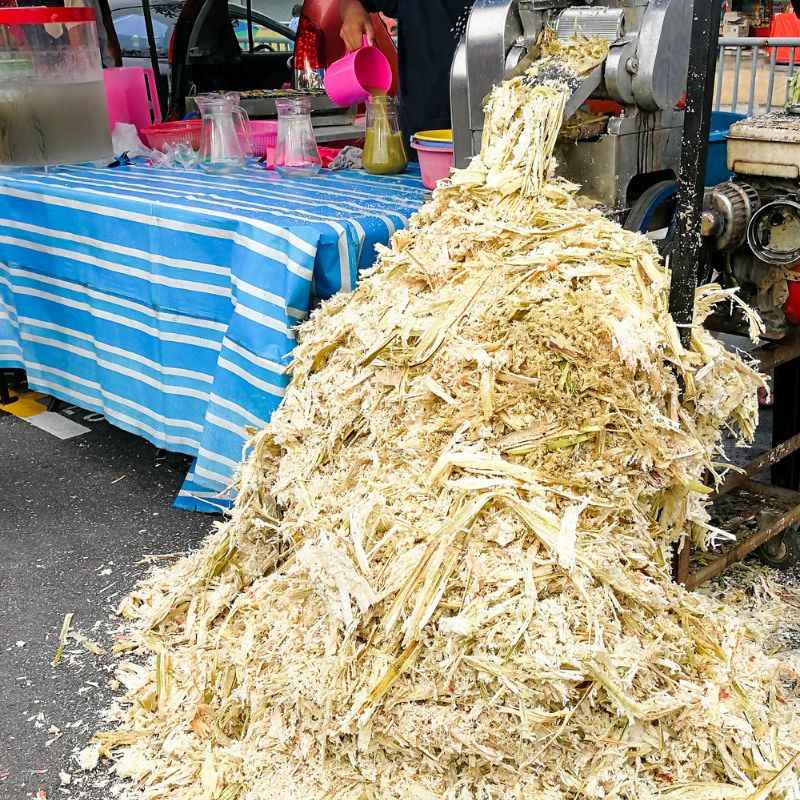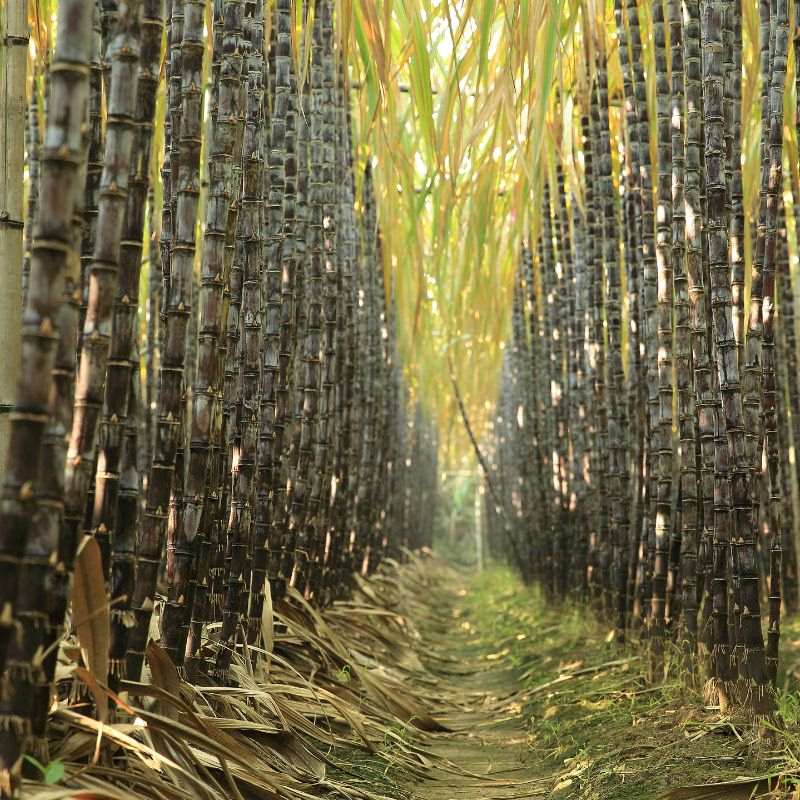In recent years, the global shift towards sustainability has propelled the search for eco-friendly alternatives across various industries, particularly in packaging and food service. Bagasse tableware, derived from sugarcane, has emerged as a leading choice among businesses aiming to adopt environmentally responsible practices. This article explores the characteristics, production processes, applications, and benefits of bagasse tableware, highlighting its appeal to B2B clients in hospitality, catering, and retail sectors.
Bagasse, a fibrous residue left after sugarcane is processed for its juice, is more than just a byproduct of sugar production.Its eco friendly properties and high fiber content make it a very good material to build sustainable products like disposable tableware.The use of bagasse for food packaging and service industries has recently drawn considerable interest, as a renewable alternative to plastic and Styrofoam. In the following we get to explore, how this natural material is worked to create functional and eco connected tableware.
What is Bagasse?

Bagasse is fibrous crud that remains after sugarcane stalks are crushed and juiced. Bagasse is a renewable, sustainable resource consisting mainly of cellulose, hemicellulose and lignin. The sugar industry depends on it not just as a byproduct, but also as a valuable material for use in other areas, including the production of biodegradable tableware.
Where is Bagasse Produced?
Wherever sugarcane is grown, there is bagasse to be produced. Brazil, India, China and Thailand are major sugarcane producing countries. Together, these regions make an important contribution to the global supply of sugarcane and bagasse. For example, Brazil alone produces about 40 percent of the world sugarcane, making it a leading supplier of bagasse. The availability of bagasse in these regions is further enhanced by the high bioconversion efficiency of sugarcane, which allows for substantial quantities to be harvested and processed each season. For every tonne of sugarcane crushed, about 0.3 tonnes of bagasse is generated, highlighting its potential as a sustainable material for various uses.
Uses of Bagasse
Bagasse has a variety of applications, showcasing its versatility and eco-friendliness:
- Biodegradable Tableware: One of the most prominent uses of bagasse is in the production of disposable tableware. This includes plates, bowls, cutlery, and lunch trays. Bagasse tableware is not only sturdy and aesthetically pleasing, but it also serves as a sustainable alternative to conventional plastic and Styrofoam products. It decomposes naturally, returning nutrients to the environment.
- Biofuel Production: Bagasse is utilized as a renewable energy source in sugar mills. The cogeneration process allows sugarcane mills to produce electricity by burning bagasse, making it an integral part of energy management in the sugar industry.
- Paper and Pulp Production: Bagasse is quite high in cellulose(about 50%) and hence suitable for making eco friendly paper and packaging materials. As businesses seek sustainable options to curb their environmental footprint, this application is becoming ever more relevant.
- Animal Feed: In regions with high sugarcane yields, bagasse is also used as livestock feed. Its nutritional value and fibrous texture provide a sustainable food source for animals.
- Composting: Composting of bagasse is an effective step towards waste management, especially sustainably. When it breaks down into nutrients rich compost, it can be used in agricultural practices.
Why is Sugarcane Bagasse Good for Disposable Tableware?
Bagasse tableware stands out for several reasons, making it a preferred choice for businesses looking to adopt eco-friendly solutions:
- Biodegradable and Compostable: All bagasse products are 100% biodegradable and compostable, breaking down in 90 days. Unlike petroleum based products, which take thousands of years to decompose, bagasse ensures that natural nutrients return to the soil, to their rightful home.
- Sturdy and Elastic Fiber: The coarse fibers of sugarcane bagasse lend themselves to the production of strong and elastic disposable tableware. This inherent strength ensures that the products can withstand various food types and handling, enhancing their usability in diverse settings.
- Sustainability: Bagasse is obtained from annually renewable sugarcane and minimizes dependence on finite fossil resources while within eco-conscious consumer values.
- Availability: Given the widespread cultivation of sugarcane, bagasse is readily available in large quantities, ensuring a consistent and reliable supply for manufacturers producing biodegradable tableware. Additionally, sugarcane is an abundant and highly renewable resource, capable of regrowth within just 10 months. This rapid regrowth makes bagasse, an eco-friendly alternative to traditional materials like paper and wood for disposable tableware production.

The Production of Bagasse Tableware
The creation of bagasse tableware involves several stages, ensuring that the final product is both durable and environmentally friendly.
- Extraction: After sugarcane is harvested, the stalks are processed to extract the juice. The remaining fibrous material is collected as bagasse.
- Cleaning and Screening: The bagasse is then cleaned to remove impurities, ensuring a safe and healthy product for consumption.
- Pulping: The cleaned fibers undergo a pulping process, which can be mechanical or chemical, to break them down into a pulp. This stage is crucial for separating lignin from cellulose, enhancing the material’s suitability for tableware.
- Molding: The pulped fibers are mixed with water and formed into various shapes using molds. This stage utilizes advanced technology to create sturdy and functional products.
- Drying and Finishing: The molded items are dried and finished, sometimes incorporating coatings for branding and enhanced water resistance. The final products are both microwavable and compostable.
- Quality Assurance and Packaging: The finished bagasse tableware undergoes quality checks before being packaged, ready for distribution.
What Bagasse Tableware is out there?
Styling flexibility stretches from casual dining to fine dining and thus bagasse tableware can suit every need in catering and banquet services. Here are some of the most common types:
- Bagasse Plates: These sturdy plates are perfect for serving a wide range of foods, from appetizers to main courses. They come with different capacities and styles that can easily serve casual occasions and fancy celebrations. Their ability to hold hot and cold items without losing structural integrity makes them a popular choice in restaurants and catering services.
- Bagasse Bowls: Perfectly suitable for use in salads, soup or dessert, bagasse bowls are non-absorbent to water and oil. Their robust construction ensures that they maintain their shape and functionality, even with heavier food items. For different usage, these bowls come in many sizes to help meet all serving requirements.
- Bagasse Cutlery: This includes forks, knives, and spoons made from bagasse fibers. The cutlery is sturdy and eco-friendly, offering a reliable alternative to traditional plastic utensils. They provide a comfortable grip and are designed to handle a range of food types, making them suitable for both casual and formal settings.
- Bagasse Lunch Trays: Ideal for meal deliveries or especially for buffet services, bagasse lunch trays are suitable for holding different foods in one place securely. Their compartments help keep different dishes separate, ensuring an appealing presentation. These trays are ideal for catering events, schools, and other institutions looking for sustainable dining solutions.
Applications of Bagasse Tableware
Bagasse tableware has a wide range of applications across various industries:
- Hospitality: Restaurants and hotels are increasingly adopting bagasse tableware as part of their commitment to sustainability. These establishments find that bagasse utensils and containers enhance their eco-friendly image while providing customers with high-quality dining experiences.
- Catering: Caterers benefit from using bagasse packaging due to its heat and oil resistance. Bagasse containers ensure food safety while promoting environmentally conscious practices, allowing caterers to offer sustainable options without compromising quality.
- Food Service and Retail: Supermarkets and food chains are utilizing bagasse products for takeaway meals and disposable cutlery. By opting for bagasse, these businesses have the opportunity to serve this growing consumer need for eco friendly packaging options and further the cause towards sustainability.
- Household Consumers: At the household level, consumers are shifting to bagasse products for their low-waste options in dining. With increased awareness for environmental concerns, the usage of biodegradable tableware becomes more and more popular in everyday life.
Benefits of Bagasse Tableware
1. Environmentally Friendly
Bagasse products are 100% biodegradable and compostable and will break down naturally in 90 days. Unlike traditional plastics that can remain in landfills or oceans for up to 500 years, bagasse is a renewable and sustainable alternative that goes back to the soil.
2. Heat and Oil Resistance
Bagasse tableware is stable at high temperatures, thus both using it for hot and for cold foods is supported. Its resistance to heat means that it can be safely used in microwaves, providing versatility in food service.
3. Sturdy and Reliable
The fibrous structure of bagasse makes it a robust choice for tableware. Because it can hold liquids effectively and resist grease and cuts, it will still remain intact during use.
4. Cost-Effective
The competitive pricing of bagasse tableware provides a unique opportunity for businesses seeking to ride to the demand for sustainable products. In order to support sustainability, companies can actually ride the wave by investing and using these eco friendly solutions to improve their market position.
5. promote brand image
This is because can be used by business to loyally advertise their eco friendly values through logo imprints on tableware. Customization of these products indicates the opportunity to increase brand visibility and to create goodwill with environmentally conscious consumers.
FAQs about Bagasse Tableware
1. Can bagasse compostable at home?
Yes, bagasse is very usefully add to home compost. It breaks down well decomposing to fertilize nutrient rich compost for the garden. But it shouldn’t go in the recycling bins as it could take longer to break down.
2. Does bagasse degrade on its own when not in use?
No, bagasse products do not decompose quickly in storage. They have a longer shelf life compared to other disposable tableware options.
3. Are there any harmful chemicals in bagasse tableware?
No, bagasse is absolutely natural and free from harmfull chemicals. Bagasse is different from plastic products that usually contain toxics; they are safe to the consumer and the environment.
4. What is the difference between bagasse and paper?
The big difference is that they come from different sources. Sugarcane derives bagasse, and wood gives us paper. Bagasse breaks down faster than traditional paper products and is more generally sturdier.
5. What are the benefits of using bagasse over plastic?
Bagasse products are compostable, biodegradable and are made from renewable resources, making them a vast environmental advantage to that of plastic (plastics that can take centuries to degrade).
Conclusion
To conclude, bagasse tableware offers a sustainable, durable, and eco-friendly alternative to conventional disposable products, making it an ideal solution for businesses looking to reduce their environmental impact. From the hospitality, catering and retail area, adopting bagasse products enables you to adopt green practices and respond to growing demand for environmentally friendly options.
And ready to discover our range of high quality, fully customisable bagasse tableware? Looking to shed your business’s eco sins? Contact us today to learn more about how our sustainable solutions can help meet your needs and significantly boost your brand’s green image.